The 20 greatest TV cop shows of all time, from Line of Duty to The Wire
Police TV series, a fixture of the small screen since its inception, have morphed from binary tales of cops and robbers to challenging and morally nebulous psychodramas. While each generation favours the ones it grew up with, Graeme Ross reckons he has nailed down the best of all time
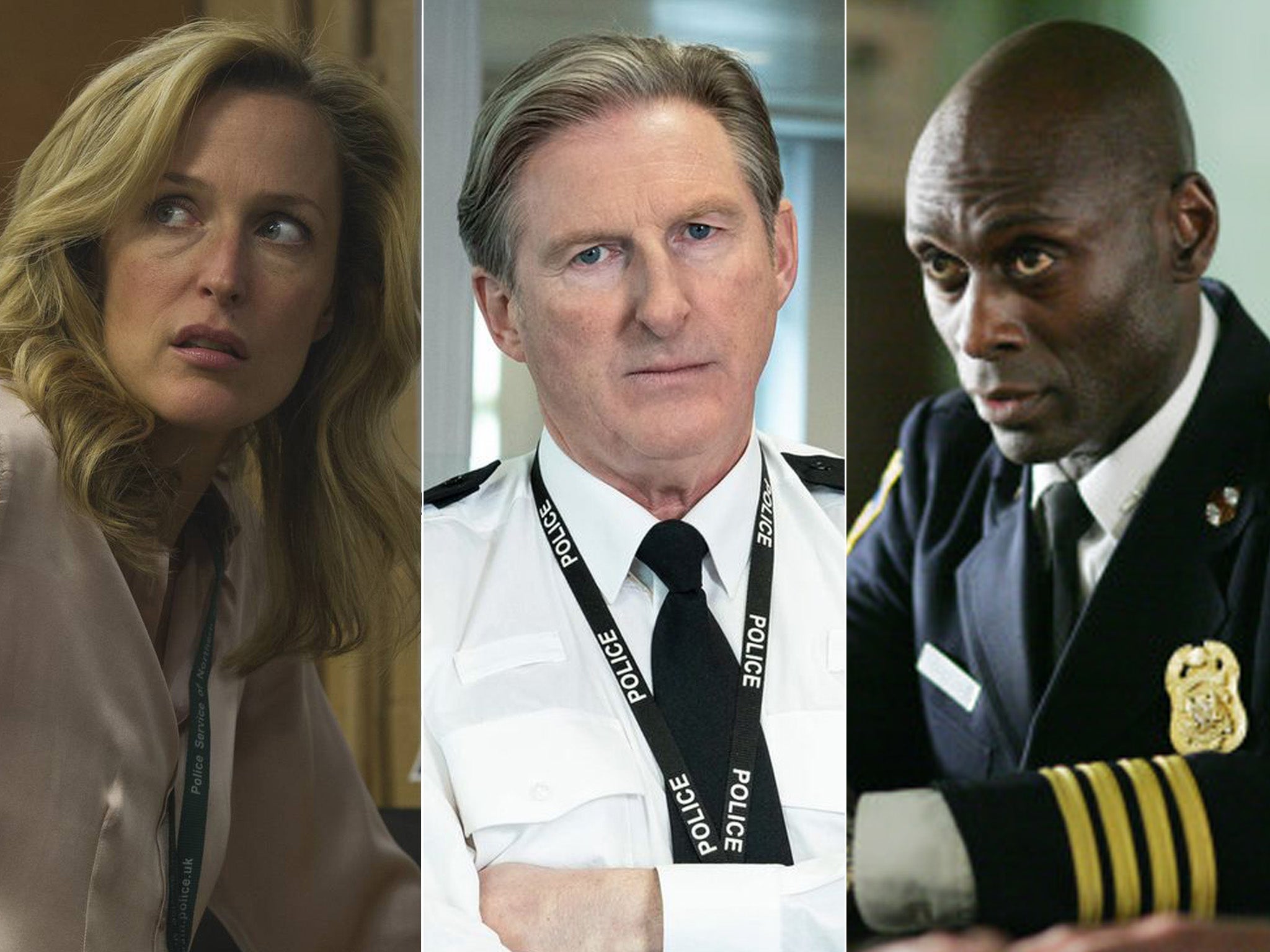
Your support helps us to tell the story
From reproductive rights to climate change to Big Tech, The Independent is on the ground when the story is developing. Whether it's investigating the financials of Elon Musk's pro-Trump PAC or producing our latest documentary, 'The A Word', which shines a light on the American women fighting for reproductive rights, we know how important it is to parse out the facts from the messaging.
At such a critical moment in US history, we need reporters on the ground. Your donation allows us to keep sending journalists to speak to both sides of the story.
The Independent is trusted by Americans across the entire political spectrum. And unlike many other quality news outlets, we choose not to lock Americans out of our reporting and analysis with paywalls. We believe quality journalism should be available to everyone, paid for by those who can afford it.
Your support makes all the difference.From the early days of television, the police in all their guises have been an essential subject for programme makers worldwide.
From the bobby on the beat in the cosy world of Dixon of Dock Green to the emotionally damaged detectives of today, with diversions into police procedurals and Scandinavian noir, the cop show has become a beloved TV institution containing many of the most compelling and memorable characters ever found on the small screen.
It's a challenge to pick the best from the myriad out there, but here is my selection of the 20 greatest TV cop shows.
20. Ironside (1967-75) Launched to much fanfare as a television movie and boasting a killer theme tune from Quincy Jones, Ironside starred Raymond Burr, who was still hot after his stint as television’s Perry Mason, as San Francisco Chief of Police Robert T Ironside, who is confined to a wheelchair after an attempted assassination. Over 199 episodes, the series followed Ironside and his team in his role as consultant to the Police Department as they sorted out the bad guys of the City by the Bay.
19. Rebus (2000-07) Ian Rankin says he has never watched any of the television adaptions of his famously brooding, heavy drinking, loner detective because he didn’t want the actors’ faces replacing how he envisaged Rebus in his head. Two actors have played Rebus on screen, John Hannah and Ken Stott. Hannah gives the role his best but was probably too young and lacked the cynical gravitas that Stott gave to Rebus.
With similar roles in The Vice and Messiah giving Stott an identifiable acting persona, he perhaps has the same problem as Humphrey Bogart being too much like Bogart to play the definitive Philip Marlowe, but in the absence of any other candidates, Stott is just fine. Rankin’s central theme of the Jekyll and Hyde dichotomy of Scotland’s capital city remains intact, and as in the novels, the real star of the show is of course, Edinburgh itself in all its historic beauty, showing the dark underbelly of the city behind the chintz curtains.
18. Life on Mars (2006-07) Nostalgia might not be what it used to be, but the biggest mystery with Life on Mars is why it took someone so long to come up with this inspired paean to the pop culture and TV cop shows of the 1970s. Throw in the fish-out-of-water time travel motif and the tongue in cheek non-PC scripts and characters, and its not hard to see why the series struck a chord with audiences.
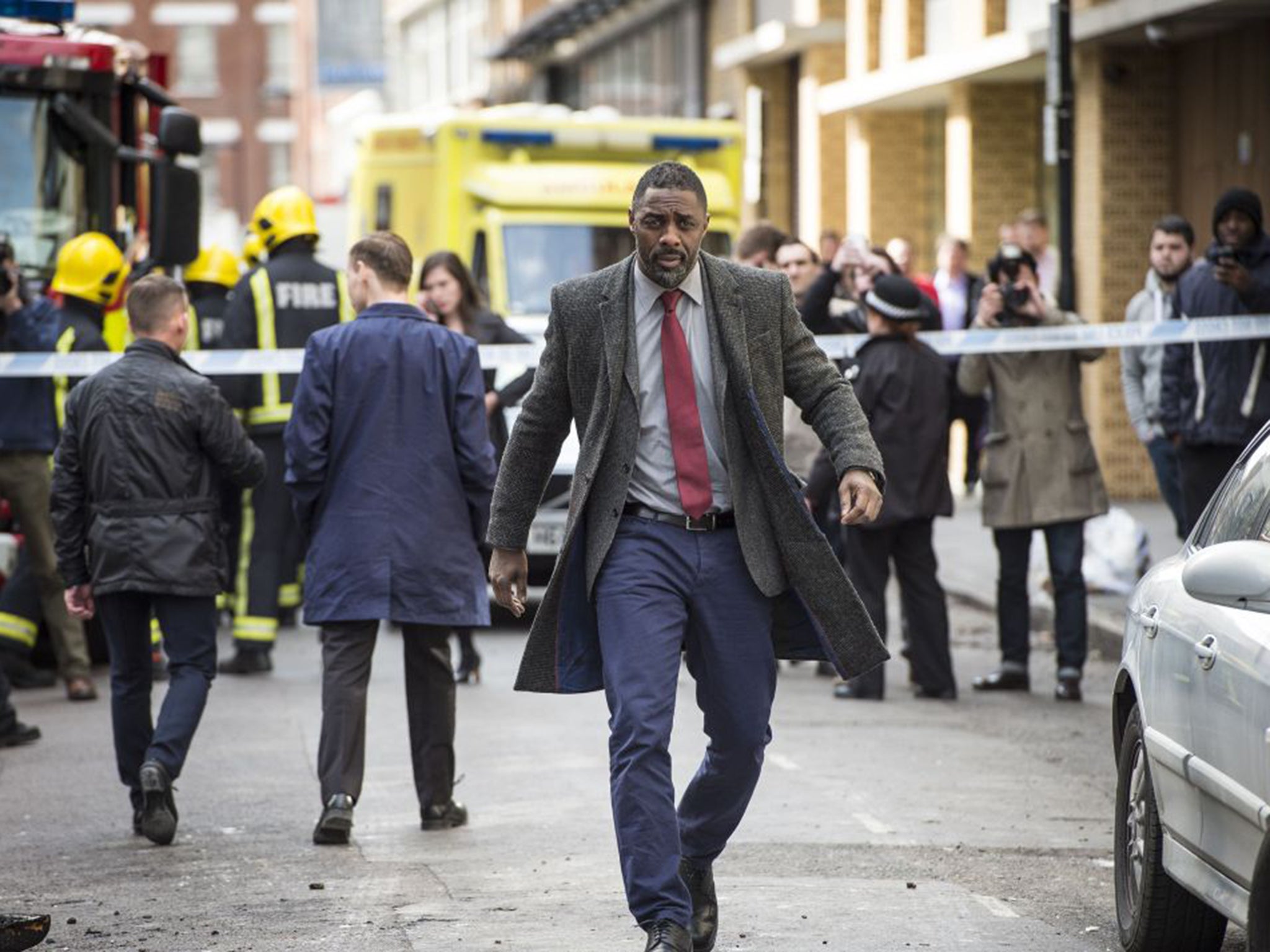
17. Luther (2010-2016) Like many of his ilk, dedicated near-genius DCI John Luther (a brilliant Idris Elba) is a tormented soul, struggling with his own inner demons, hugely affected by the stomach churning crimes he investigates. Luther is so obsessive that he will do anything to get his man (or woman, in the case of his nemesis, the psychopathic scientist Alice Morgan (Ruth Wilson) Both cerebral and heart pumping, Luther was created by Neil Cross and has spawned American and Russian versions.
16. The Fall (2012-16) Gillian Anderson is the deliberate, dedicated senior detective on the trail of an equally meticulous serial killer in this controversial drama filmed and set in Northern Ireland. The Fall survived accusations of misogyny and voyeurism to lift a Bafta for best television drama and keep viewers hooked for three series, but remains a troubling, unsettling experience for many.

Watch Apple TV+ free for 7 days
New subscribers only. £8.99/mo. after free trial. Plan auto-renews until cancelled

Watch Apple TV+ free for 7 days
New subscribers only. £8.99/mo. after free trial. Plan auto-renews until cancelled
15. Cagney and Lacey (1981- 88) The cop show that more than any other blew the stereotypical image of female police officers out of the water, and challenged the sexist attitudes of many executives in the television industry. Tyne Daly and Sharon Gless won the hearts of millions of viewers, and six Emmys between them, as two dedicated New York police officers who happened to be women with normal lives and challenges like everyone else. The bond between the two characters was unbreakable despite leading entirely different lives (Lacey was married with a family and supportive husband, Cagney drifted from relationship to relationship). A game changer in many ways, Cagney and Lacey explored issues such as rape, abortion and Cagney’s alcoholism head on.
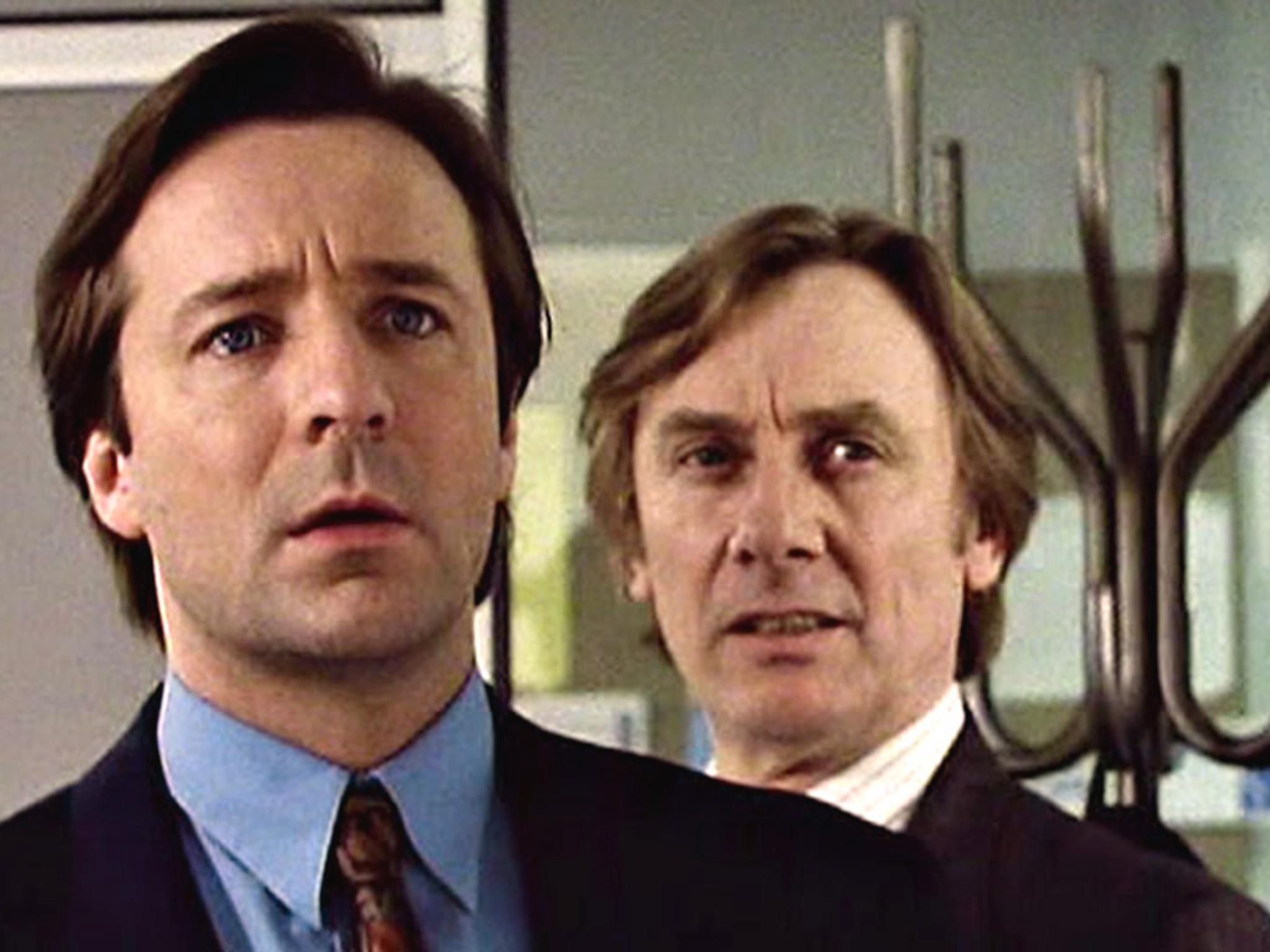
14. Between the Lines (1992-94) Set in the Metropolitan Police Complaints Investigation Bureau, the Bafta winning Between the Lines follows ambitious Chief Superintendent Tony Clarke and his team as they investigate corruption within the police force. Between the Lines drew praise for the way it tackled topical issues of the day as it attempted to address the age old moral dilemma, quis custodiet ipsos custodes – who will guard the guards themselves?
13. The Shield (2002-08) The cop show that more than any other blurred the lines between the good guys and the bad guys. Rogue cop Vic Mackey leads the elite “strike force” of LA detectives who routinely break the law to keep the streets safe, but also to feather their own nest. There are subplots aplenty, and Mackey’s downfall plays out almost like a Shakespearean tragedy.
12. Z Cars (1962-1978) Set in the fictional northern town of Newtown, Z Cars broke new ground in police drama shows, challenging the homely predictability of the likes of Dixon of Dock Green. Devised by Allan Prior and Troy Kennedy Martin, the series centred on not just one central protagonist, but rather several police officers both uniformed and plain clothed. Z Cars brought some iconic characters into the nation’s living rooms such as detective Charlie Barlow, PC “Fancy” Smith and desk sergeant Bert Lynch. The police officers themselves were portrayed warts and all, with gritty subject matter, including domestic abuse at the hands of a police officer, at the heart of the storylines. The actors became household names with the iconic theme tune whistled on everyone’s lips, and of course there were the “Z” cars themselves, the American-style Ford Zephyr and Zodiac patrol cars.
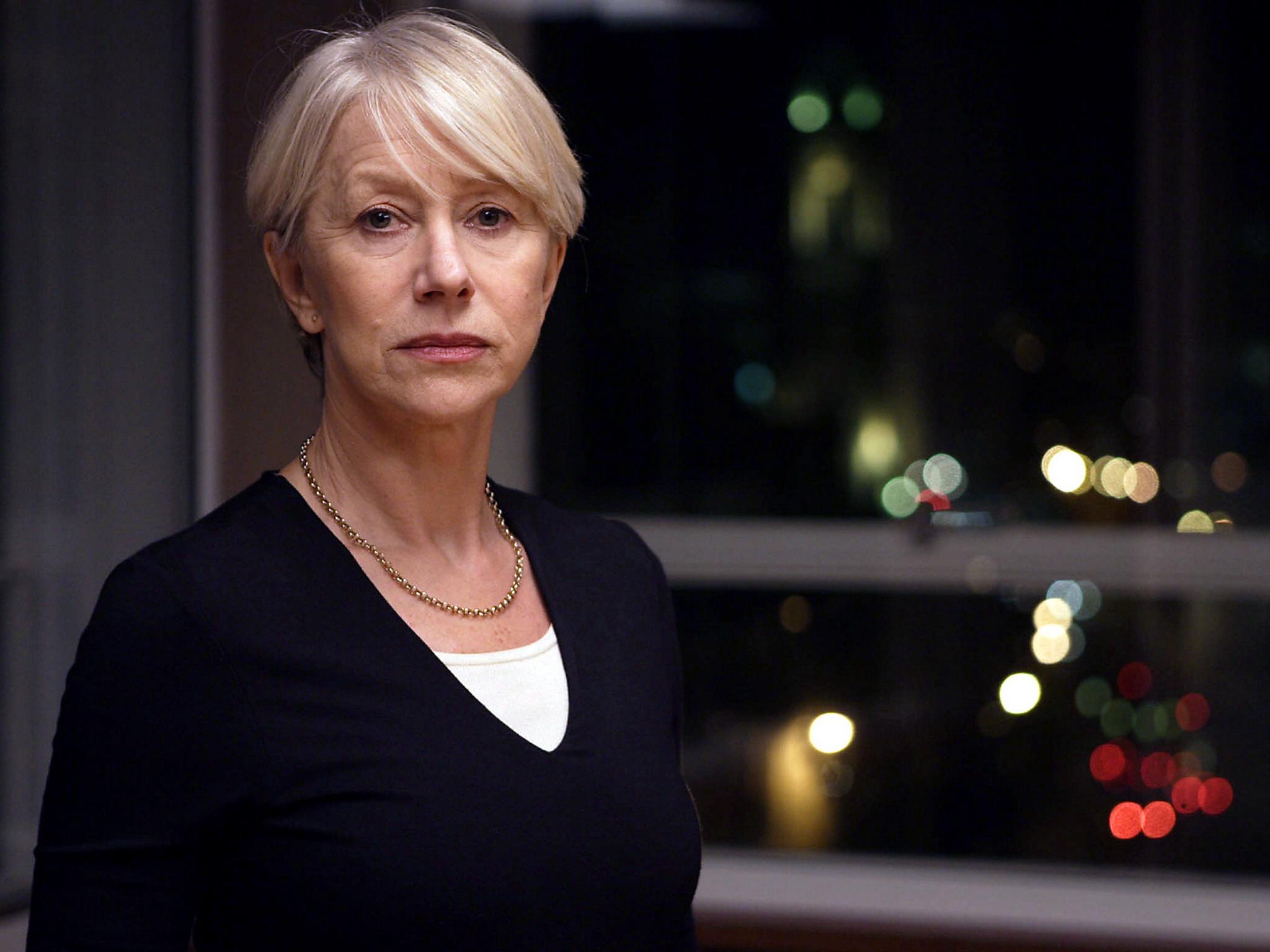
11. Prime Suspect (1991- 2006) If Cagney and Lacey blazed the trail for female cops, then the first series of Prime Suspect in particular indicated a seismic shift in the perception of, and the attitudes towards, the female police officer. Helen Mirren is outstanding as DCI Jane Tennison who heads a murder squad hunting a sadistic serial killer, but has to overcome opposition and resentment from her team as well as the institutionalised sexism of the police department itself. Subsequent series concentrated more on Tennison’s inner demons as she began to rely on alcohol to help her cope with the pressures of the job.
10. The Killing (2007-2012) This Danish police procedural and prime example of Scandinavian noir attracted criticism for its violence against women. It did, however, become an international success particularly in the UK. Viewers were gripped by the formula; that of each episode reflecting 24 hours in the same murder case, and by the cold-fish female detective protagonist Sarah Lund, while developing an almost fetishist fascination with her knitwear. The Killing paved the way for other subtitled European crime dramas and equally popular and acclaimed entries such as The Bridge and Borgen quickly followed.
9. Law and Order (1990-2010) Filmed in New City with a two-pronged approach of the investigation of a crime and arrest of a suspect, followed by the suspect’s trial, Law and Order introduced one of the great small-screen detectives, recovering alcoholic Lennie Briscoe. (Jerry Orbach). The show’s boast was that many of its subject matters were “ripped from the headlines” and it was this approach that gave it a compelling topical feel and made it the longest-running American crime series and the benchmark for police procedurals.
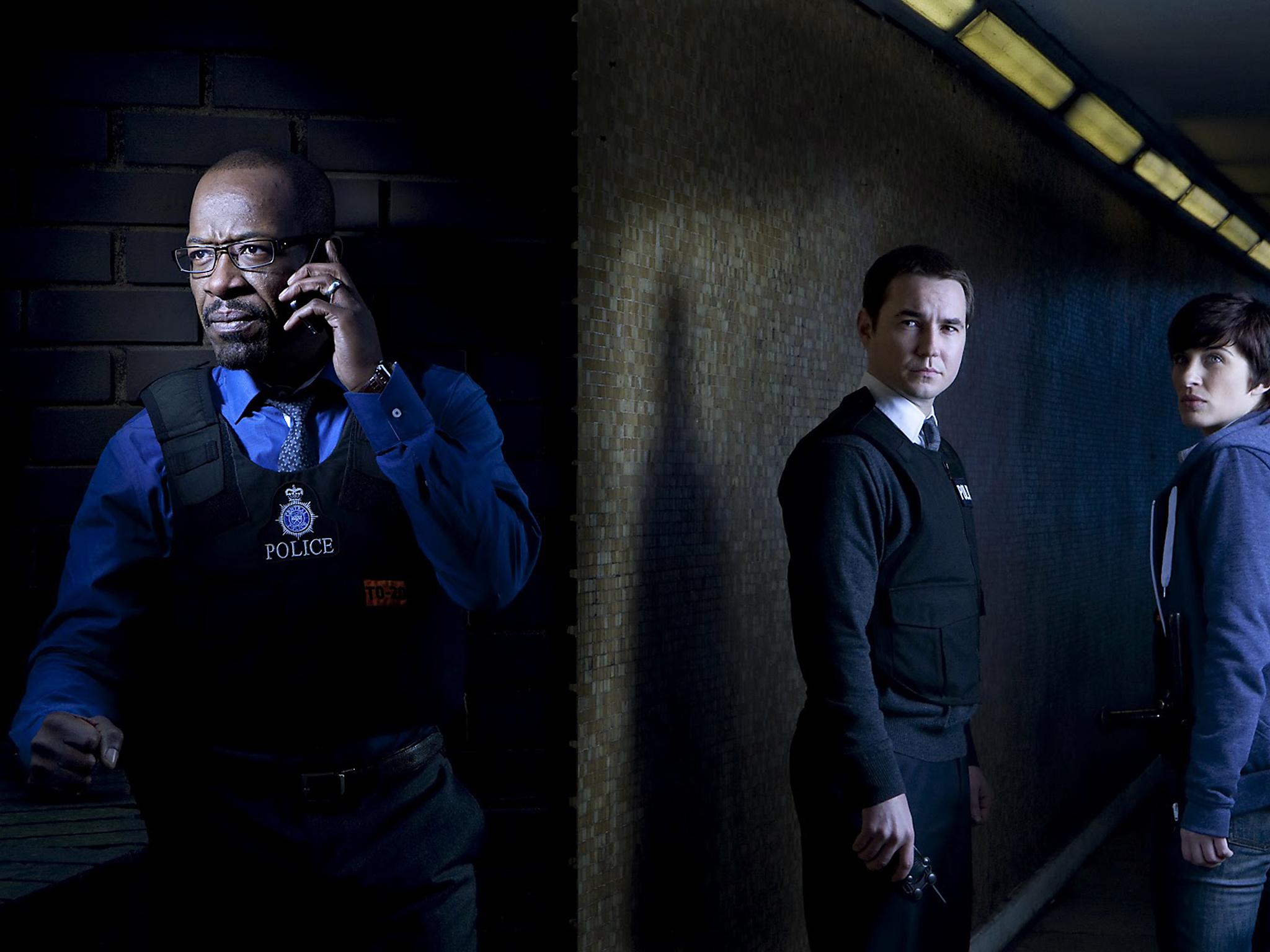
8. Line of Duty (2012-) An outstanding ratings success for BBC2, Jed Mercurio’s masterful police corruption thriller gripped viewers from the very beginning and kept them guessing until the explosive climax to the third series. The bold, serpentine and gripping storylines provided the exemplary cast with parts of a lifetime, with the most outstanding feature of Line of Duty undoubtedly the lengthy interrogation scenes as the tension was racked up notch by notch. With the deaths of two of the most compelling characters, the bent copper “Dot” Cottan and the morally questionable Lindsay Denton, the programme’s fans may have worried about its future – but worry no more as two more series are in the pipeline.
7. Columbo (1971- 2003) After Bing Crosby turned the role down, Peter Falk became synonymous with the cigar smoking, dishevelled police lieutenant in a shabby raincoat, winning four Emmys and a Golden Globe. Referred to as a “howcatchem” by its’ creators, Columbo deviated from the traditional whodunit in that the audience and, it seemed, Columbo himself, knew the identity of the murderer from the start. Half the fun of the show was watching the murderer (frequently an A- or B-list guest star) underestimate the seemingly bumbling, absent-minded detective while he baited the trap to snare them. Oh, and just one more thing, as Columbo himself might say: although Columbo routinely spoke of his wife, she was never seen in any episode, but the character was later given her own, short-lived, spin-off show, Mrs Columbo.
6. The Wire (2002-08) It has been compared to the works of Dickens and Dostoevsky and lauded as the greatest television programme ever. But the triumph of The Wire is how it tells the story of the decaying city of Baltimore through the lives of the police, drug dealers, politicians, children and the dispossessed, making no moral judgements between good and bad in a predominately grey world. The Wire may not be the greatest television programme ever, but its realism and authenticity can never be in doubt. In 2005, members of a drugs gang claimed they had studied The Wire in order to learn about the latest police surveillance techniques, surely the ultimate example of life imitating art.
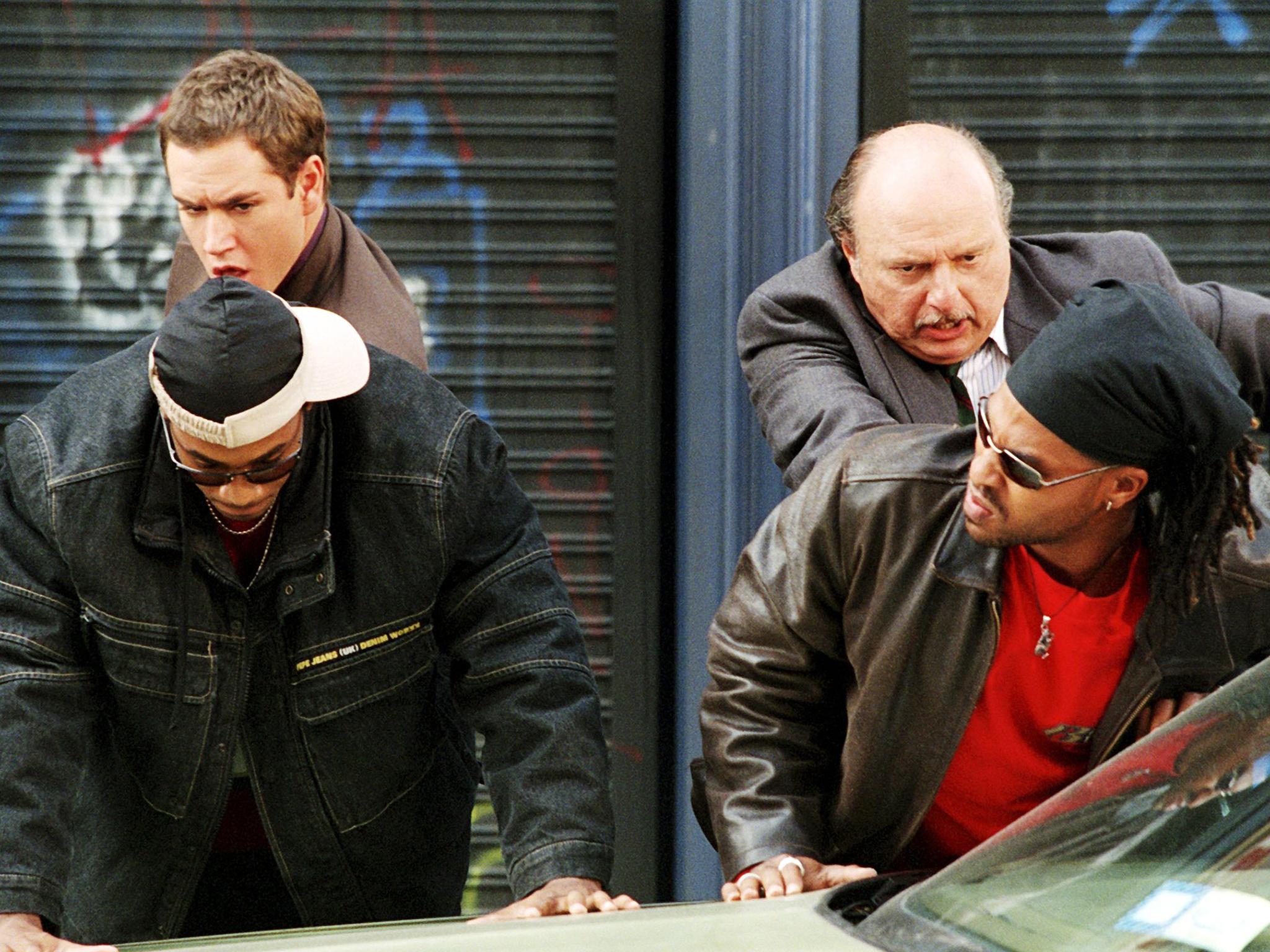
5. NYPD Blue (1993-2005) Aping its antecedent Hill Street Blues’ cinema verite style, multi award winning NYPD Blue was a natural progression for co-creator Steven Bochno, who along with David Milsch came up with even grittier storylines, atmospheric New York locations and warts ’n all characters to create a hugely compelling and influential cop show. But let’s be honest, despite a terrific ensemble cast, Dennis Franz as scenery-chewing recovering alcoholic detective Andy Sipowicz, was virtually the whole show, appearing in all 261 episodes and in the process searing his psyche in viewers’ minds.
4. Homicide: Life on the Street (1993-98) Baltimore native Barry Levinson was a natural fit as executive producer of this ultra-realistic police procedural, based on The Wire creator David Simon’s book chronicling his experiences following homicide detectives at work in the so-called “City of Firsts”. From the very first episode Life on the Street succeeded in dispelling the myths and stereotypes about the television cop, showing that murder and violence were just a routine parts of the job. Indeed the murder of a schoolgirl in that first episode was never solved. Aficionados rate this show even better than The Wire. Some have called Homicide: Life on the Street the missing link between Hill Street Blues and The Wire. Beg, borrow or steal the box set and find out why.
3. Inspector Morse (1987-2000) Such is the renown of the celebrated television adaptation of Colin Dexter’s novels featuring the enigmatic real-ale swilling, arts loving, crossword buff detective, that there’s very little left to say apart from it’s basically a brilliant variation on the classic English whodunit, Kevin Whately’s Lewis is to John Thaw’s Morse as Dr Watson was to Sherlock Holmes, and Thaw is simply wonderful.
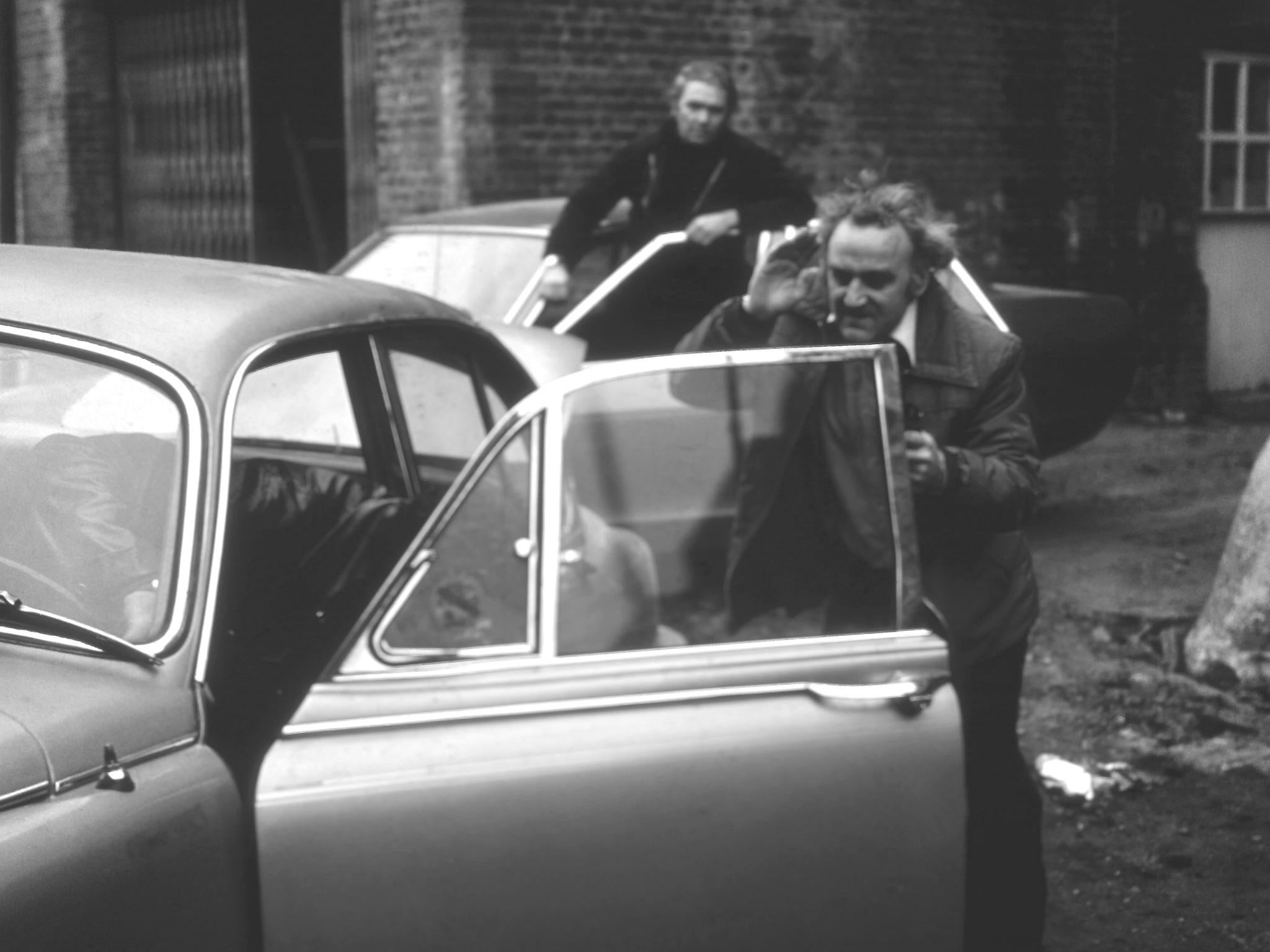
2. The Sweeney (1975-78) It has become so caricatured and parodied in recent years that it’s easy to overlook the fact that The Sweeney made Z Cars look as antiquated as the former did Dixon of Dock Green a decade earlier. Created by Ian Kennedy Martin, brother of Z Cars co-creator Troy, The Sweeney was shot in 16mm film and that, along with extensive location shooting, gave it a more cinematic look than other studio-bound rivals. Focusing on the Metropolitan Police Flying Squad, The Sweeney was all booze, cigarettes, car chases, punch-ups and catchphrases that quickly entered the public consciousness. It was fast paced, hold onto your trousers, non-PC entertainment, and at the heart of it all lay the model for the tough, volatile, maverick policeman that would inhabit similar programmes for years to come. And there had never been a TV cop like John Thaw’s Jack Regan before. Frustrated by the red tape preventing him from doing his job, Regan was not above using violence and bending the law to achieve his aims. Forty years on, the cars, the attitudes and the trousers may have dated, but The Sweeney retains its magnetic hold, and as a microcosm of its time and style, not to mention as landmark television, it has rarely been bettered.
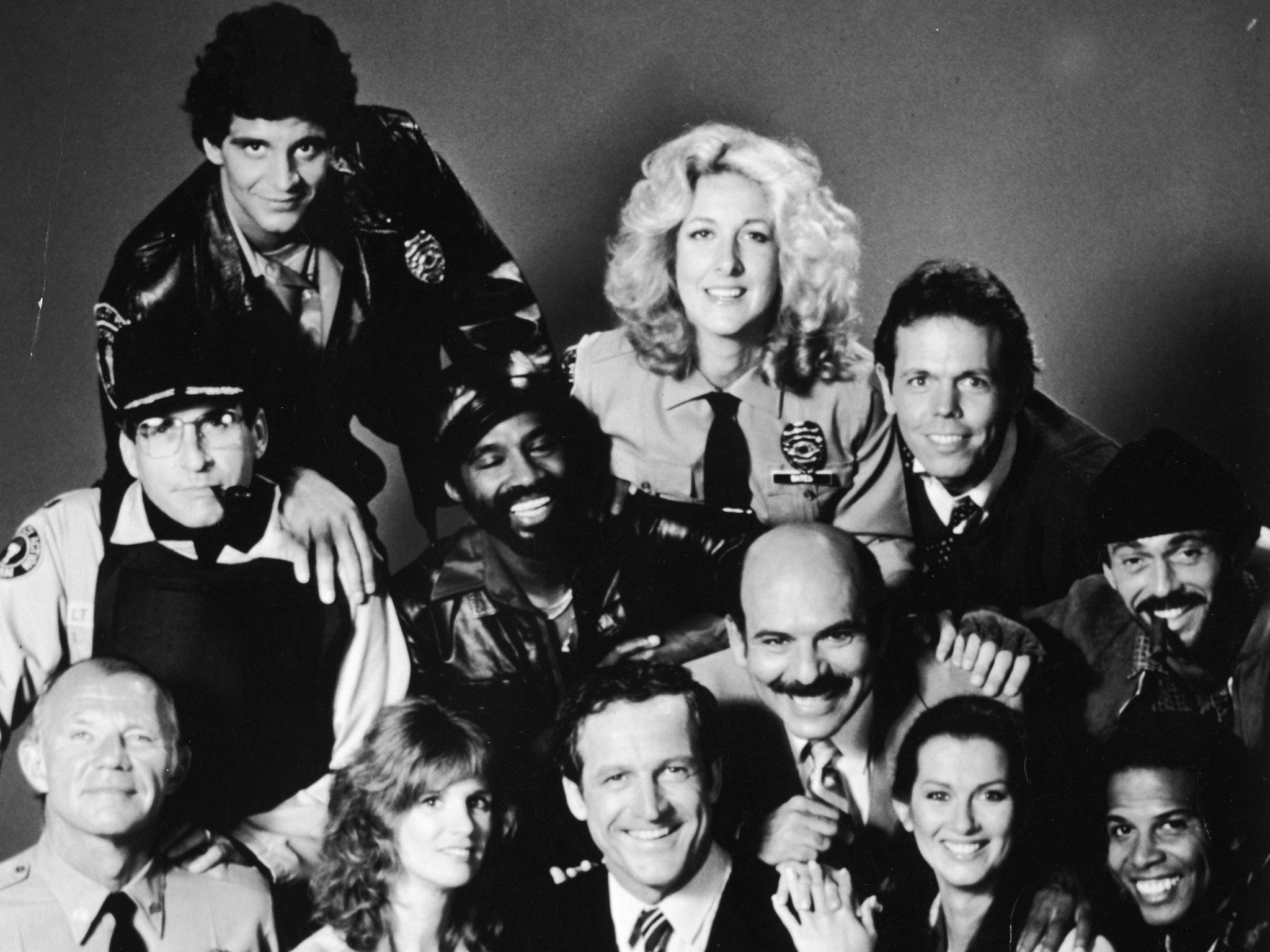
1. Hill Street Blues (1981-1987) Created by Steven Bochco and Michael Kozoll and still celebrated, still hugely influential, and still the cop show to which almost everything that has come since owes a huge debt. From Mike Post’s iconic theme and the innovative cinema vèritè-evoking handheld camera, to the brilliant ensemble cast creating beloved characters and dramatic storylines in the urban sprawl of an unnamed US city, Hill Street Blues pioneered a new wave of cop shows. Ironically, it never gained huge audience ratings, but garnered a grand total of 98 Emmy nominations. Groundbreaking, thought provoking, emotional and funny, Hill Street Blues stands tall in the canon of truly great television.
Join our commenting forum
Join thought-provoking conversations, follow other Independent readers and see their replies
Comments